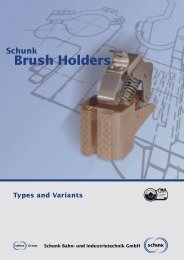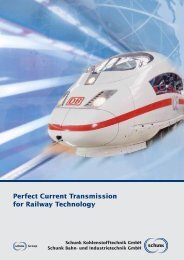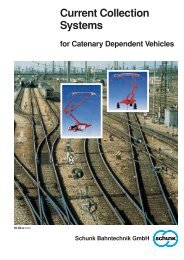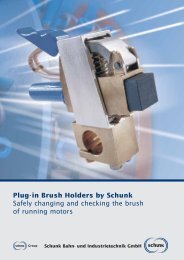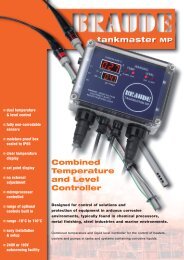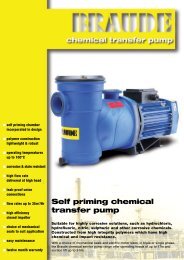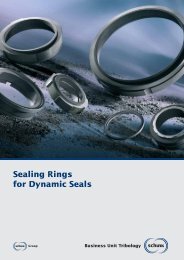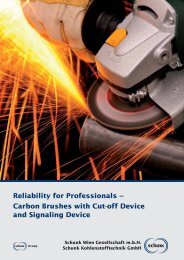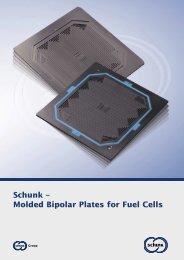Bearings
Bearings
Bearings
You also want an ePaper? Increase the reach of your titles
YUMPU automatically turns print PDFs into web optimized ePapers that Google loves.
An increase in loading capacity by<br />
impregnation with antimony is only<br />
achieved for low sliding speeds of<br />
less than 0.5 m/s. The most significant<br />
improvement can be observed<br />
by special salt impregnations, as<br />
shown in the p•v chart 2.<br />
This p•v chart gives the loading<br />
capacity of the non-impregnated<br />
electrographite FE45Y3 compared<br />
to that of the salt impregnated<br />
electrographite FE65.<br />
The p•v charts show that the<br />
product p•v is practically constant<br />
for each material.<br />
ed. Sliding speeds above 1.5 and<br />
2 m/s respectively, result in higher<br />
wear, assuming p•v is constant.<br />
The maximum loading curves<br />
determined for dry running radial<br />
bearings also apply to dry running<br />
axial bearings.<br />
The p•v chart 3 shows the maximum<br />
loading curves for wet running<br />
radial carbon bearings out of<br />
material FH42Z2 (carbon graphite,<br />
impregnated with synthetic resin)<br />
and FH42A (carbon graphite,<br />
impregnated with antimony).<br />
specific load<br />
N/cm 2<br />
500<br />
400<br />
300<br />
200<br />
100<br />
-FE45Y3-<br />
-FE65-<br />
0.5 1.0<br />
1.5 2.0<br />
sliding speed<br />
m/s<br />
The following values have been<br />
determined for the different<br />
Schunk materials:<br />
• FH42 p•v = 11 N/cm 2 x m/s<br />
• FH44Y3 p•v = 30 N/cm 2 x m/s<br />
• FE45Y3 p•v = 40 N/cm 2 x m/s<br />
• FE65 p•v = 190 N/cm 2 x m/s<br />
In the p•v charts the curves for<br />
maximum loads are given for<br />
sliding speeds of 0.2 to 1.5 and<br />
2 m/s, respectively.<br />
At sliding speeds of v < 0.2 m/s the<br />
maximum load given for v = 0.2 m/s<br />
should not be substantially exceedp•<br />
v diagram no. 2:<br />
Loading capacity of dry running<br />
carbon bearings as a function of sliding<br />
speed; comparison FE45Y3/FE65<br />
9




